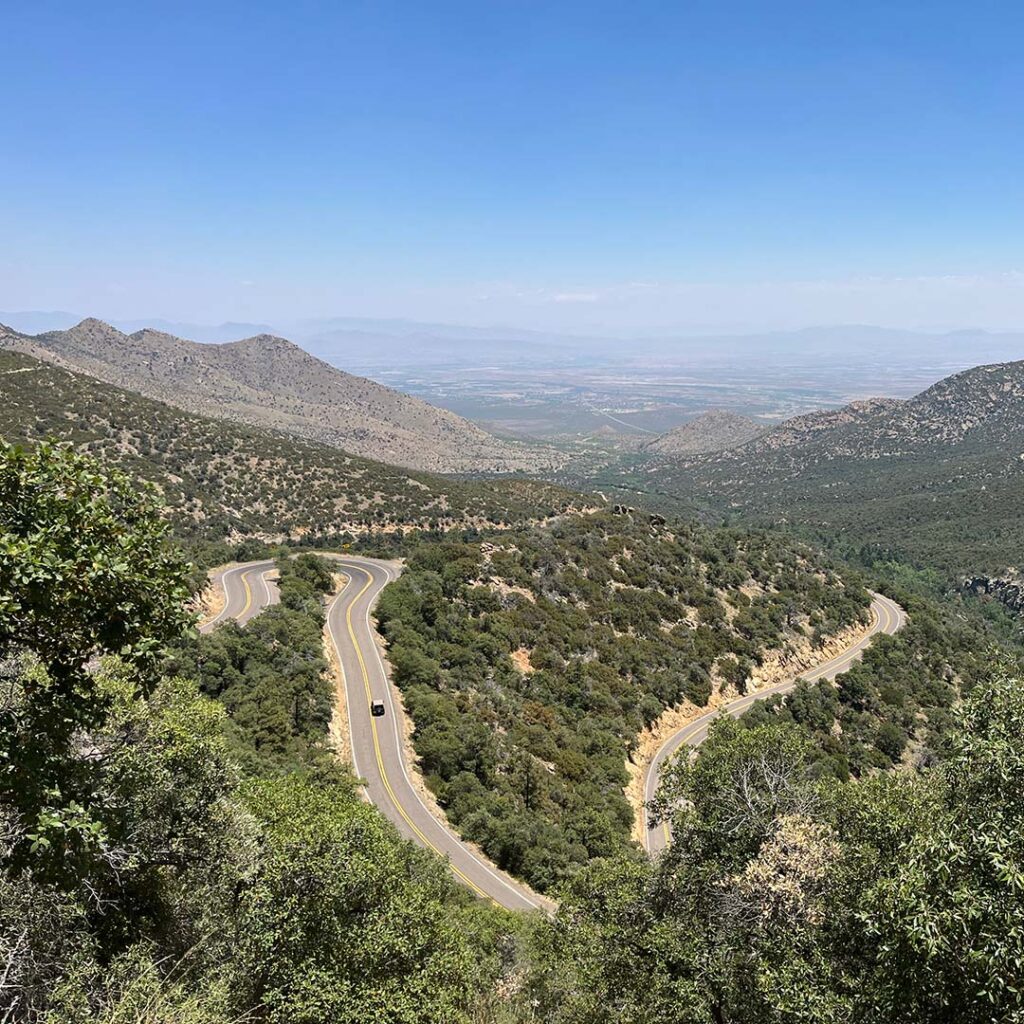
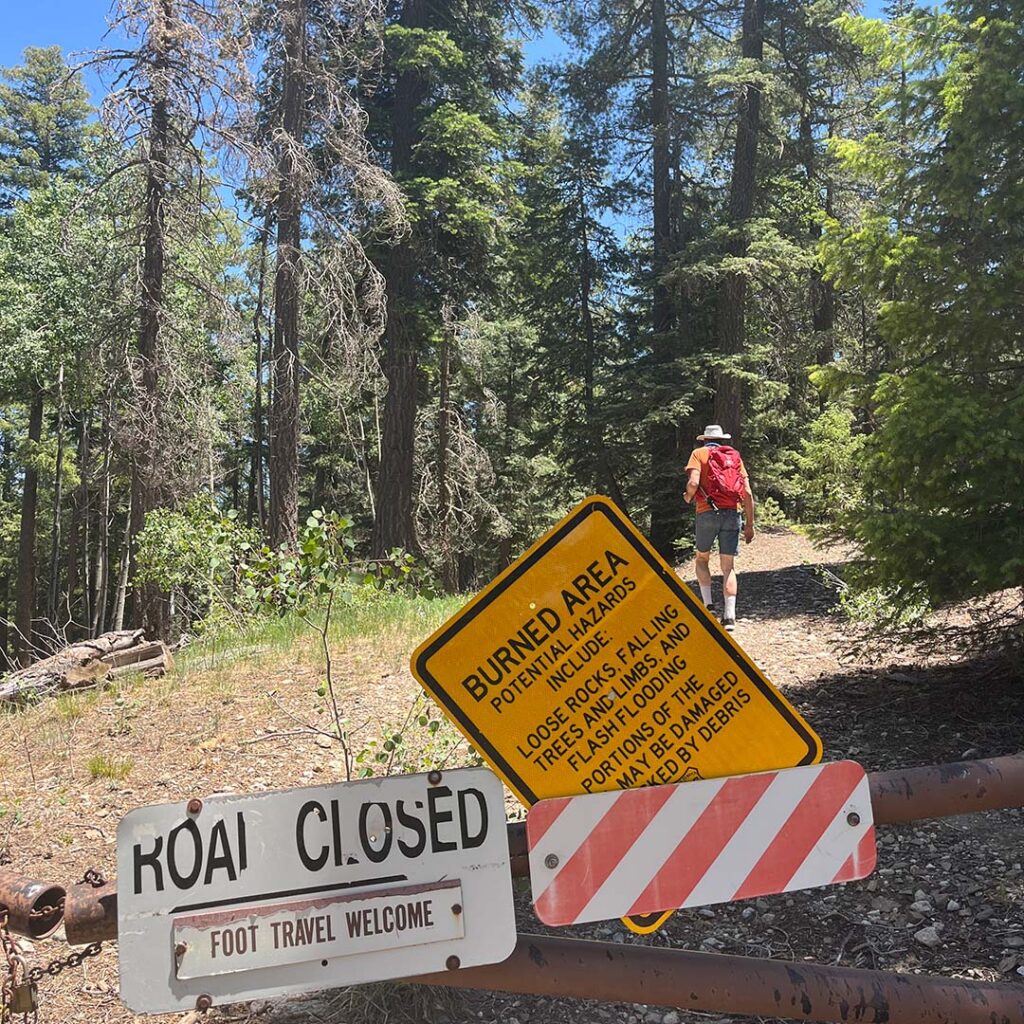
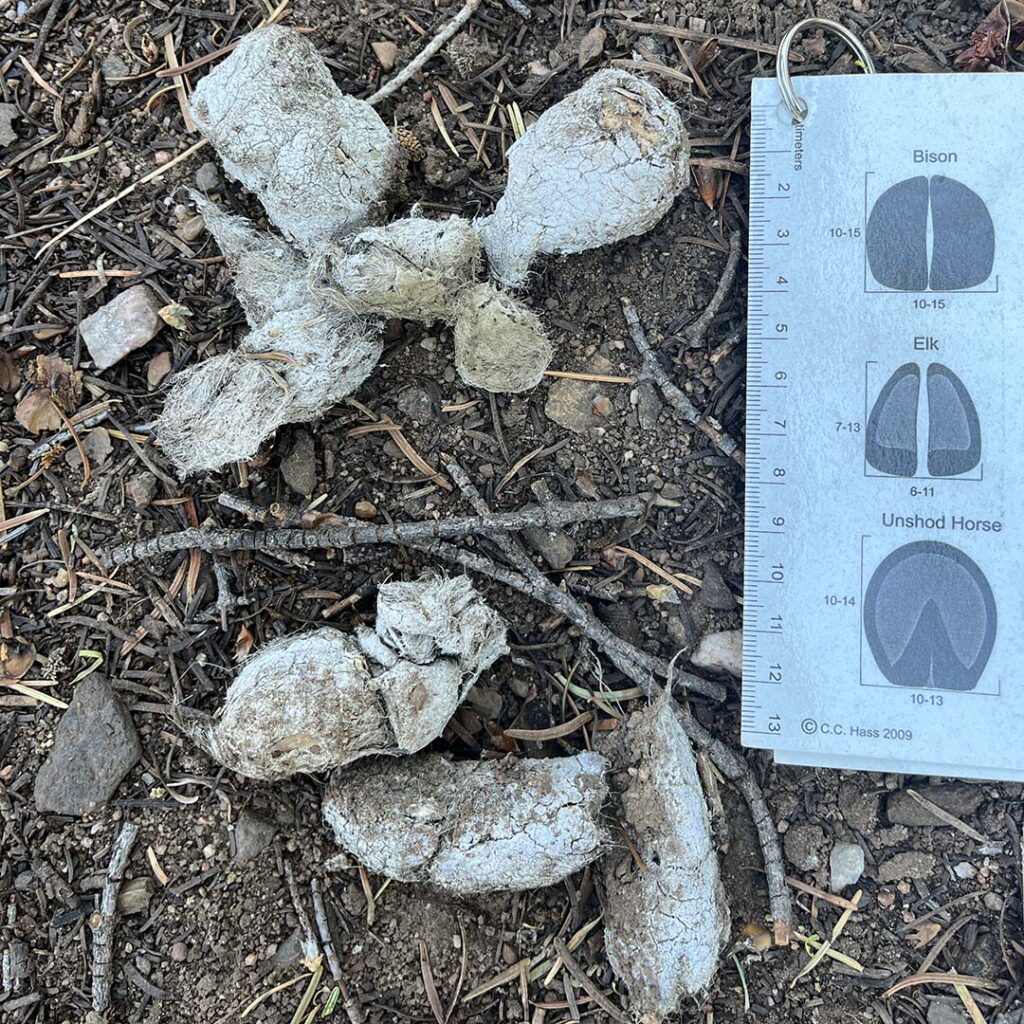
Guest Blog by Wynne Brown
The following is part of a series of recommended Sky Island hikes. Be safe, have fun, and leave no trace.
One hundred-and-hot.
Yup, that phrase pretty well sums up Tucson’s temperature in June. Not ideal for hiking — so my husband Dave Peterson and I escaped to the Pinaleño Mountains in southeast Arizona, knowing it would be at least 20 degrees cooler.
And no wonder: This range is the highest in our Sky Islands, with Mount Graham topping out at 10,700 feet. Because of its particularly steep terrain, the range also supports the greatest diversity of habitats in the shortest vertical distance of any mountain range in North America. Mount Graham holds the honor of being the 20th most prominent peak in the lower 48, and it’s also home to the Mount Graham International Observatory, which recently celebrated the 20th anniversary of its Large Binocular Telescope. For some truly out-of-this-world images from the telescope, check out this website.
For a trail that’s on our home planet and that we had to ourselves even on a Friday afternoon, try the Grant Hill Loop Trail #322. It’s actually three loops, a mix of old logging trails and narrower connectors — and it combines easy flat-ish walking with a bending/balancing workout as you duck under and climb over dozens of fallen trees. These mountains were hit by the 1996 Clark Peak Fire, 2004 Nuttall Complex Fire, and 2017 Frye Fire — so don’t be surprised if you go home with blackened socks.
The route is also a walking lesson in succession as the aspens, ranging from ankle-high to 20 feet tall, applaud your progress as you hike in and out of the mosaic burn.
For us, the rewards were well worth the clambering over charcoal-covered trunks. Above us hung an ultramarine sky in stark contrast to the vivid green of the new aspen leaves and ferns. To the west lay stunning views over Fort Grant, the Aravaipa Valley near Bonita, the Sulphur Springs Valley near Willcox with its alfalfa irrigation pivots, and then tawny desert stretching across the Galiuros and to the Catalinas in the far blue distance.
All along the way, we savored the soundtrack of wind hissing among the conifer needles and the tympany of tree trunks tapping against one another, both accompanied by the rippling melody of the hermit thrush. Neither of us would ever call ourselves actual birders, but we’re certainly fans of Merlin’s sound ID feature, which alerted us to a warbling vireo, yellow-eyed junco, house wren, western tanager, and the lovely red-faced warbler.
Although “Pinaleño” sounds “piney,” the name actually derives from a Native word for “many deer” or “deer mountain” — and we did indeed disturb a deer, most likely at this elevation a Coues’ white-tailed deer.
June’s a lovely time for wildflowers here. Although the lupines were past their best, we ambled past lots of yarrow (Achillea millefolium) and the brilliant yellow golden bean (Thermopsis rhombifolia).
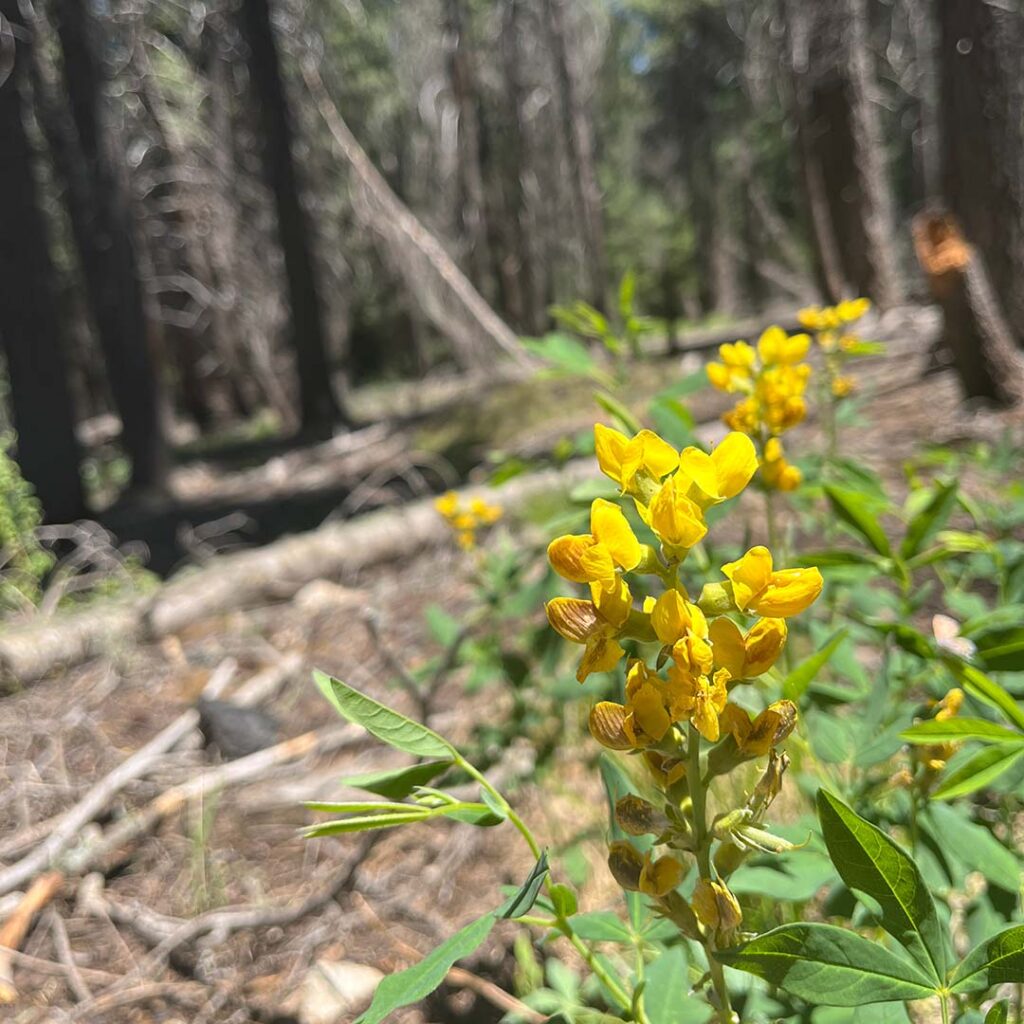
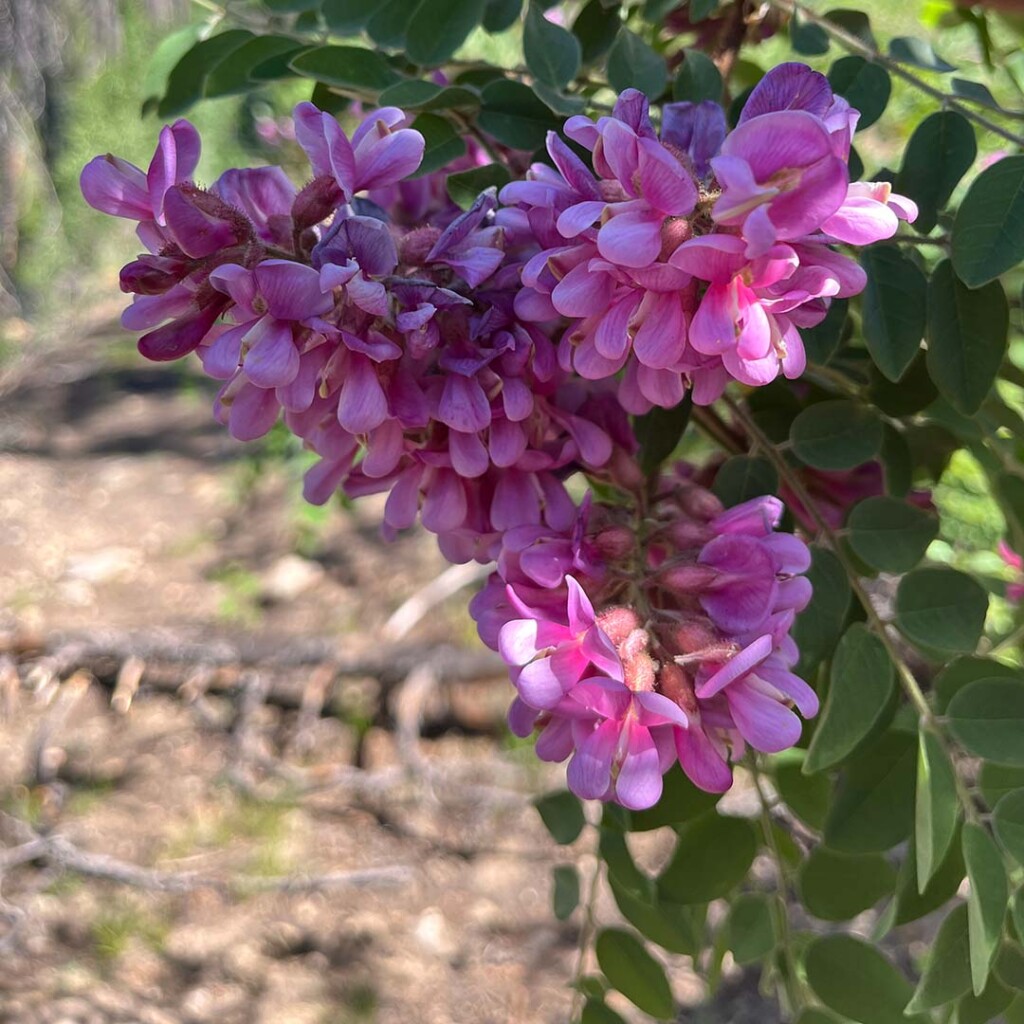
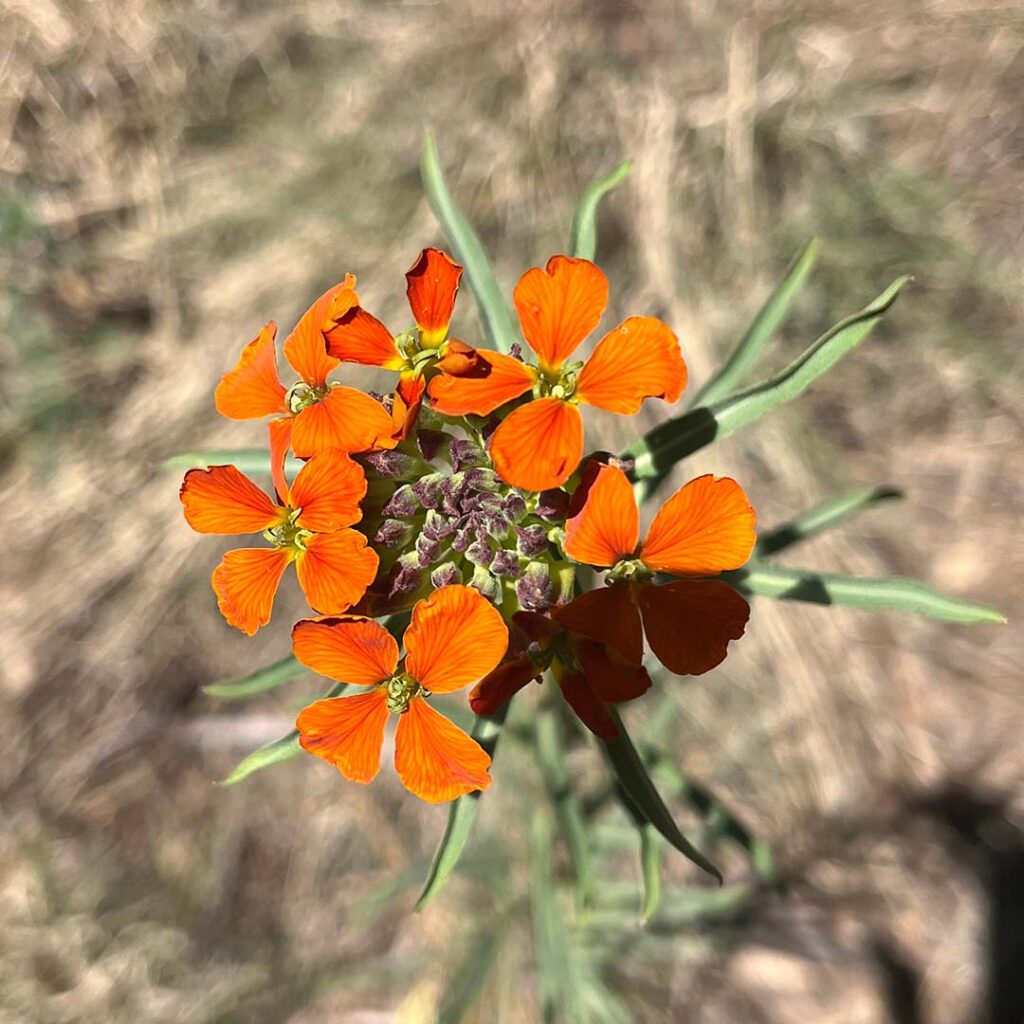
However, the Botanical Rock Star Award was a unanimous vote, split between the heavily flowering, seriously thorny, and much-visited-by-bees New Mexico locust (Robinia neomexicana) and the vibrant tangerine western wallflower (Erysimum capitatum). The latter, a member of the mustard (Brassicaceae) family, is notable: According to the National Park Service, it has the greatest range distribution by elevation of any wildflower, having been recorded from 2,500’-12,500’ throughout the Rockies and the desert canyons of the Great Basin and Colorado Plateau.
Perhaps it needs a more appropriate common name: A shy wallflower it is not!
Altogether, the Pinaleños gave us a delicious day out of the heat, well worth the three hours of driving from Tucson.
Getting There
From I-10, take Exit 355 onto US-191 north toward Safford. Then take AZ-366 west (named the Swift Trail, but do note that it is anything but a fast drive) about 32 miles, passing Hospital Flat on the way. The Grant Hill Loop trailhead will be on your left.
Wynne Brown is an independent scholar, editor, poet, graphic designer, and author based in Tucson. Her award-winning book “The Forgotten Botanist” explores the life and work of Sara Plummer Lemmon and was the subject of one of SIA’s virtual Coffee Breaks in 2022. Learn more and watch a recording of Wynne’s excellent talk.
